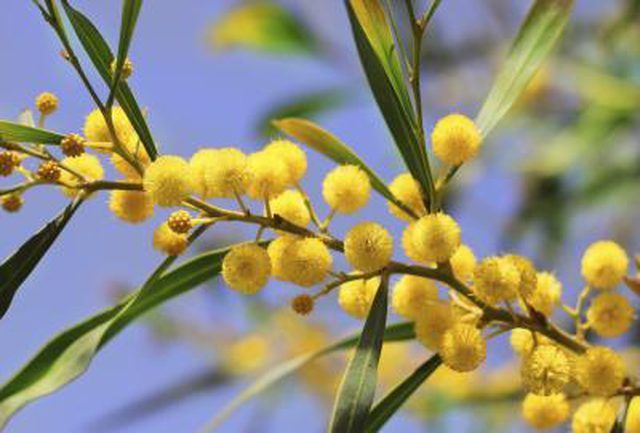Bulbs
Flower Basics
Flower Beds & Specialty Gardens
Flower Garden
Garden Furniture
Garden Gnomes
Garden Seeds
Garden Sheds
Garden Statues
Garden Tools & Supplies
Gardening Basics
Green & Organic
Groundcovers & Vines
Growing Annuals
Growing Basil
Growing Beans
Growing Berries
Growing Blueberries
Growing Cactus
Growing Corn
Growing Cotton
Growing Edibles
Growing Flowers
Growing Garlic
Growing Grapes
Growing Grass
Growing Herbs
Growing Jasmine
Growing Mint
Growing Mushrooms
Orchids
Growing Peanuts
Growing Perennials
Growing Plants
Growing Rosemary
Growing Roses
Growing Strawberries
Growing Sunflowers
Growing Thyme
Growing Tomatoes
Growing Tulips
Growing Vegetables
Herb Basics
Herb Garden
Indoor Growing
Landscaping Basics
Landscaping Patios
Landscaping Plants
Landscaping Shrubs
Landscaping Trees
Landscaping Walks & Pathways
Lawn Basics
Lawn Maintenance
Lawn Mowers
Lawn Ornaments
Lawn Planting
Lawn Tools
Outdoor Growing
Overall Landscape Planning
Pests, Weeds & Problems
Plant Basics
Rock Garden
Rose Garden
Shrubs
Soil
Specialty Gardens
Trees
Vegetable Garden
Yard Maintenance
How to Grow a Mimosa Tree
How to Grow a Mimosa Tree. Also known as silk tree, mimosa tree (Albizia julibrissin) is a fast growing deciduous member of the bean family that can grow up to 3 feet per year, eventually reaching heights up to 40 feet. Mimosa tree is tolerant of a wide range of growing conditions, requiring little to no care to produce an attractive canopy of...

Also known as silk tree, mimosa tree (Albizia julibrissin) is a fast growing deciduous member of the bean family that can grow up to 3 feet per year, eventually reaching heights up to 40 feet. Mimosa tree is tolerant of a wide range of growing conditions, requiring little to no care to produce an attractive canopy of fernlike leaves and fluffy, fragrant blooms. The tree may not be suitable for Florida gardens, as the Florida Exotic Pest Plant Council lists mimosa tree as an invasive exotic plant.
Plant in Full Sunlight
Mimosa tree is hardy in U.S. Department of Agriculture plant hardiness zones 6 to 9, where it will produce its best growth in full sunlight. The tree will also tolerate partial or light shade. Because sun can penetrate the tree's open canopy -- which may spread 20 to 50 feet -- grass can grow right up to the trunk of the tree, making mimosa tree an excellent lawn accent. However, when planted near a home or walkway, dropped flowers, seed pods and leaves can become a hassle to clean up.
Tolerant of Poor Soils
Mimosa tree will grow in a wide range of soil types, including poor, alkaline soils. A well-draining soil enhanced with 2 to 4 inches of organic matter such as shredded leaves, peat moss or dehydrated manure is ideal. Mimosa tree tolerates salty soils but will suffer if planted in a garden with direct maritime exposure. The tree does well in high summer temperatures and will tolerate drought, though weekly waterings during dry periods will boost growth. Fertilizer is not necessary for this tree: Plants for a Future notes that in highly fertile soils, the tree produces soft growth which is susceptible to frost damage.
Watch for Wilt Disease
Verticillium wilt is a common mimosa tree disease that causes symptoms such as faded, wilted foliage, branch dieback and, occasionally, death of the entire tree. Removing bark on infected branches may showcase wet-looking dark spots. Help prevent the disease by irrigating your tree during long dry periods, as stressed trees are more likely to develop problems. Prune out dead branches, disinfecting your pruning equipment with a mixture of 1 part bleach to 9 parts water to avoiding spreading the disease. Do not plant mimosa tree in areas where verticillium wilt has been a problem in the past.
Propagation Is by Seed
Mimosa tree may be propagated by seed. To aid in germination, scratch the surface of the hard seed with a file or knife and soak in boiling water or sulfuric acid. Let the seed cool for 24 hours, then plant directly in a sunny area of the garden during the growing season. Established mimosa trees often self-seed, sometimes to the point of becoming a nuisance. Saplings flower in about 3 years.